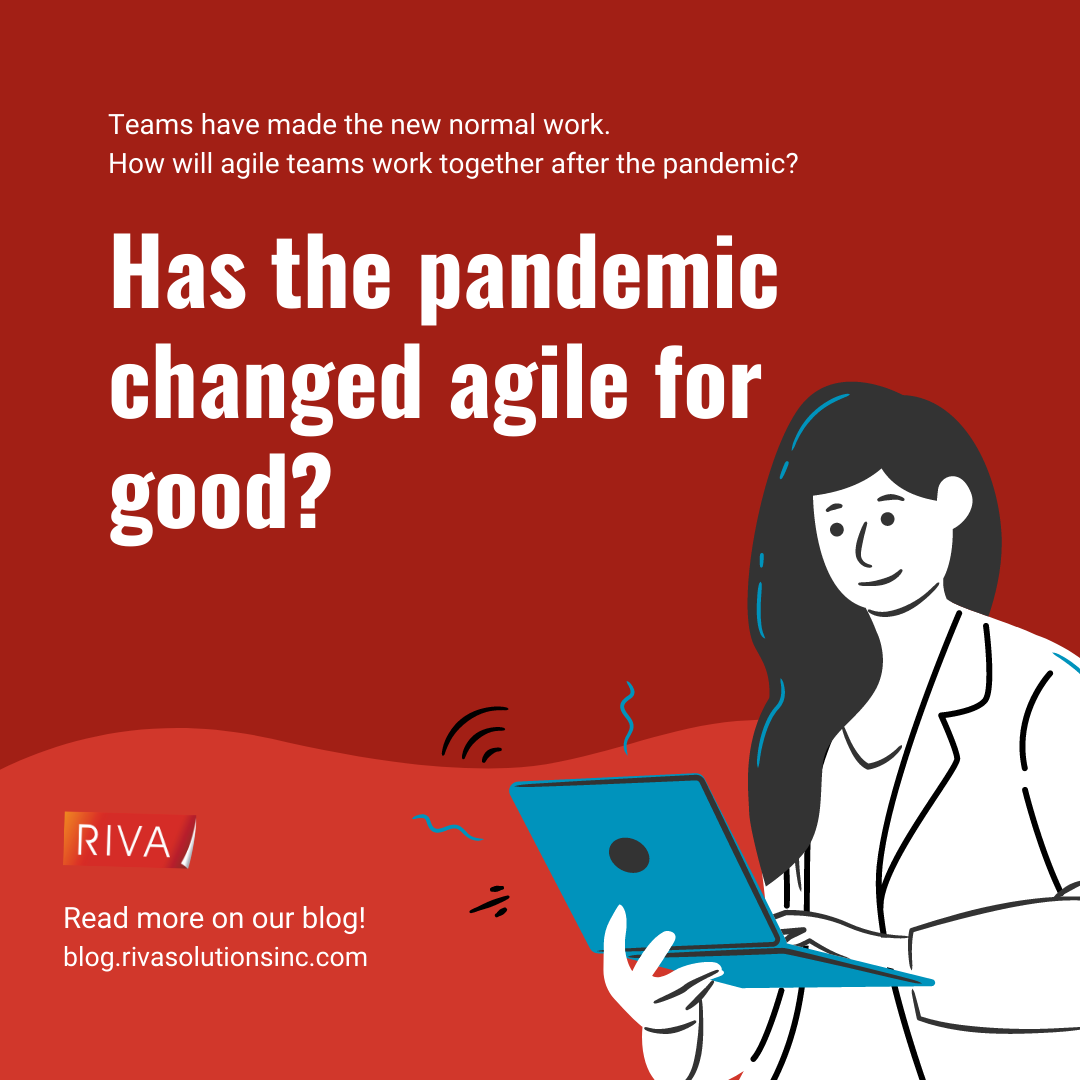One of the 12 Principles of Agile is “The most efficient and effective method of conveying information to and within a development team is face-to-face conversation.” Despite numerous developments in work environments and culture, agile purists continue to emphasize this principle and encourage individuals to work together in the same space and gather in person for ceremonies. However, an unprecedented global pandemic shut down the possibility of in-person interactions for many organizations, even for the purist of agilists.
Like many organizations, teams that use agile methodologies were forced to make big changes to the way they work together in March of 2020. Sprint planning sessions moved to virtual platforms and teams were forced to adopt or invent new tools and strategies for conducting ceremonies and tracking progress. Even program increment (PI) planning, which previously might have involved a substantial amount of coordination and resources to convene hundreds of people in the same space for multiple days, was forced to turn to a virtual alternative.
And guess, what? Teams have made the new virtual normal work. In many cases, productivity has not suffered and agile teams have continued delivering value even without the in-person interaction. So, how will agile teams work together after the pandemic? Will those purists jump right back in to emphasizing the importance of in-person interactions or will the shift to virtual teams become a permanent fixture in the agile community?
Organizations of all types are learning that going “back to normal” is simply not an option. After working virtually for a full year while juggling new priorities, today’s employees have new expectations for their employers and their working environment. Organizations that embrace those changes and adapt and improve on the old status quo have seen more success during the pandemic, with fewer disruptions to services and output. These organizations will continue to succeed and thrive after the pandemic compared to those that are focused on returning to pre-pandemic norms.
This is also true with agile teams. While some employees in all types of organizations will want to return to their offices when it is safe to do so, there will also be many who prefer a remote or hybrid model. Again, organizations that embrace change and flexibility and invest in tools, policies, and processes that allow for a more flexible working environment will be more prepared to operate in the constantly evolving working environment, whereas organizations that rigidly require employees to work in person every day will undoubtedly suffer. Allowing for virtual work not only enables employees to have more flexibility in their working environment, it also allows for more flexibility in working hours and in hiring.
Virtual collaboration opens organizations to a much larger pool of candidates because they are not limited to those within one specific area of the country or world. Less flexible companies will end up missing out on high performing employees who prefer more flexibility.
It will also be a very difficult sell to ask companies to spend the time and resources needed to coordinate an in-person PI planning session once a quarter if they have witnessed a full year of virtual PI planning sessions that have yielded comparable results. Even though there are undoubtedly benefits to in-person collaboration, the past year has proven that virtual ceremonies can be effective, and agile teams have increased the tools needed to improve virtual collaboration. Organizations will now bear a heavier burden of analyzing the benefits of in-person collaboration with the associated constraints and costs.
The truth of the matter is that agile teams were already becoming more virtual and dispersed before the pandemic hit. The complete inability for many organizations to gather in person merely sent this transformation into overdrive. As we continue to move into the increasingly virtual future of work, agile organizations (and all organizations) should be mindful of the following four workplace concerns:
- Planning and allowing time for team building. Individuals who work in the same space will inevitably build more rapport with each other than those located across the country. With virtual teams, organizations must deliberately prioritize and build in time for teams to get to know one another and build that rapport that improves trust and collaboration in the workplace.
- Coordinating becomes more challenging with dispersed teams. We all have individuals that prefer the early or late start to the work day, but when individuals are located on opposite sides of the country or even across the world, these time differences start to matter more. Especially during critical events like PI planning, teams must consider all time zones when planning and make compromises to accommodate different schedules.
- Setting expectations around communications. As teams become more dispersed, effective communication becomes even more critical. Teams need to have an understanding of when their teammates are available and unavailable. Teams must also learn their teammates’ communication preferences (chats, calls, videos, etc.). Doing the upfront work to align expectations and preferences will ease communication issues down the road.
- Investing in collaboration tools. If your organization has not already altered their way of working, then they are already behind. To effectively work together in a remote environment, teams will need robust communication and collaboration tools that maintain transparency and accountability.
With vaccinations on the rise in the United States, we’re starting to see the light at the end of the tunnel. By the end of the year, or even sooner, we could start to see a shift back to in-person and really battle test the hybrid approach. What are your predictions for the future of Agile? Drop me a note and let’s connect, I’d love to hear your thoughts.



Leave Comment